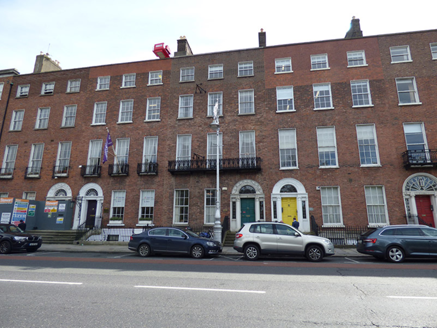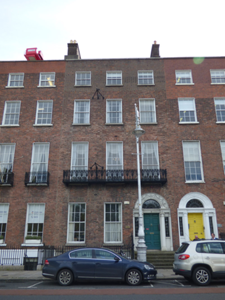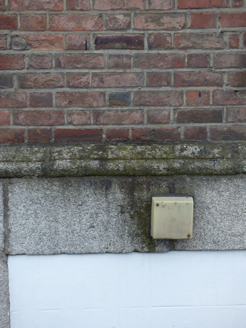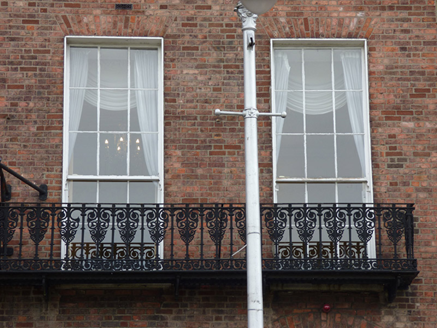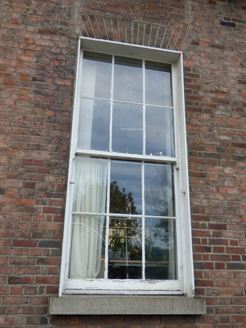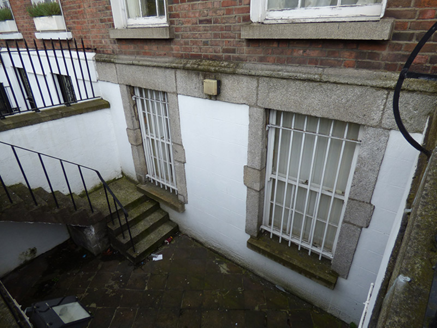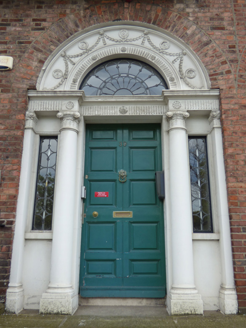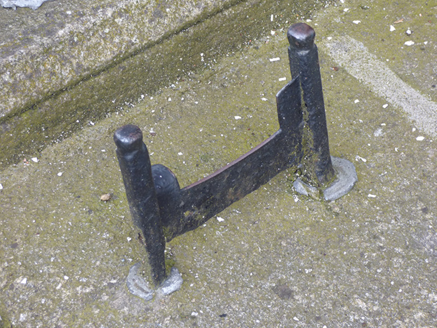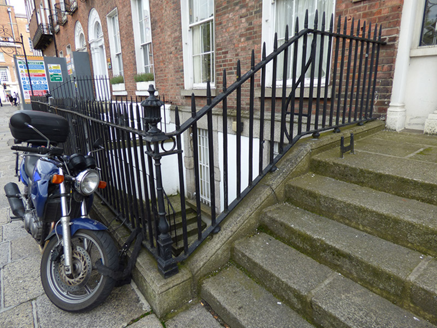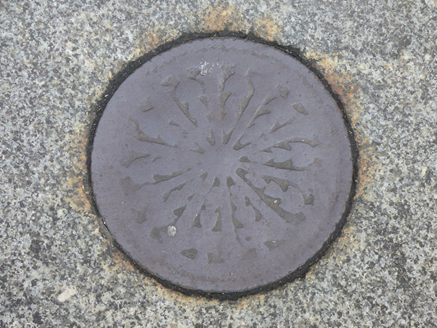Survey Data
Reg No
50100505
Rating
Regional
Categories of Special Interest
Architectural, Artistic
Previous Name
British Embassy
Original Use
House
Historical Use
Embassy
In Use As
Office
Date
1780 - 1800
Coordinates
316846, 233503
Date Recorded
24/08/2016
Date Updated
--/--/--
Description
Attached three-bay four-storey former house over basement, built c. 1790 as one of terrace of four (Nos. 37-40), with bowed rear elevation and two-storey rear return. Now in use as offices. Pitched slate roof to front part, hipped to south, behind refaced brick parapet with granite coping and parapet gutters, and having two roofs perpendicular to street to rear, north roof being fully hipped and south having curved hip to east. Rebuilt shouldered brick chimneystacks to party walls with rendered base to north and largely replacement clay pots. Flemish bond red brick walling on moulded granite plinth course over painted ruled-and-lined rendered basement walling; rebuilt in brown brick to top floor. Wrought-iron fixtures for vertical banner between western two bays of upper floors. Square-headed window openings, diminishing in height to upper floors, with painted rendered reveals and replacement granite sills, and having granite block-and-start surrounds to basement openings. Timber sliding sash windows with horns, three-over-three pane to top floor, nine-over-six pane to first floor and six-over-six pane elsewhere. Continuous decorative cast-iron balcony to first floor and wrought-iron grilles to basement. Apparently timber sliding sash windows to rear. Round-headed tripartite door opening, with painted masonry doorcase comprising engaged Adamesque Ionic columns with respond quarter-pilasters, stepped entablature with fluted and rosetted frieze, leaded petal fanlight with swagged and fluted surround, geometric-motif leaded sidelights and ten-panel timber door with beaded muntin and brass furniture. Shared granite platform with iron boot-scrape and five granite steps. Basement area enclosed by wrought-iron railings with decorative cast-iron posts on moulded granite plinth. Cast-iron coal-hole cover set in granite flags to pavement.
Appraisal
No. 39 Merrion Square is part of a cohesive group on the northeast side of the square, Nos. 38-40 being built for Edward Kent. the building is well-retained and features an elegant tripartite Adamesque doorcase with a decorative leaded fanlight and sidelights, adding a strong visual focus to the otherwise restrained façade. The balconettes and setting details enhance the building's ornate qualities and ensure that it contributes to the intact appearance of the square. Developed as part of the Fitzwilliam Estate, the square is one of the best-preserved Georgian streetscapes in Ireland. The north, east and south sides of the square are lined with houses of eighteenth and nineteenth-century date, while the west side is terminated by the garden front of Leinster House. The houses of the east side are the most uniform of the terraces on the square, maintaining similar building heights and fenestration patterns. Individuality was introduced through the use of elaborate doorcases, ironwork features and interior decorative schemes. The east side of the square was originally set out in five large plots, the houses built here being generally narrower than those on the north side and erected in a piecemeal fashion. The house, which served as the British Embassy, was burnt following 'Bloody Sunday' in Derry, January 1972. It was restored 1973-4.
